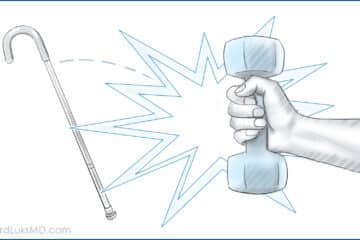
When we think about musculoskeletal disorders – be it joint pain, muscle stiffness, or tendon issues – the immediate assumption often leans towards mechanical wear and tear. It’s easy to attribute aching knees or a stiff shoulder to the physical demands placed upon our bodies over the years. However, this perspective overlooks a crucial element in the equation of bodily health: our metabolic health.
The burgeoning field of medical research is increasingly spotlighting the profound impact of metabolic health on our musculoskeletal system. This connection extends beyond the conventional boundaries of diabetes and heart diseases, encroaching into the realms of joint health, muscle integrity, and overall physical function. In this comprehensive exploration, we will delve into what metabolic health truly entails and unravel its significant yet often underappreciated influence on musculoskeletal wellness.
Understanding Metabolic Health
At its core, metabolic health is a multi-faceted concept encompassing various aspects of bodily function. It’s not just about the absence of metabolic diseases like diabetes or obesity; it’s a broader spectrum encompassing blood sugar levels, lipid profiles, and systemic inflammation markers. When in balance, these components facilitate optimal bodily function. However, when out of sync, they can significantly disrupt bodily systems, including the musculoskeletal structure.
Blood Sugar Levels: Stable blood sugar levels are pivotal in preventing chronic conditions like diabetes, which can have far-reaching effects on bodily tissues, including muscles and joints. Elevated blood sugar levels, insulin resistance, and metabolic syndrome increase the amount of inflammatory mediators circulating around our bodies. These inflammatory mediators will then influence the health of all the other tissues in our body, including our joints and tendons.
Lipid Profiles: Lipids, encompassing cholesterol and triglycerides, when imbalanced, can lead to atherosclerosis. The lesser-known impact of these lipids is their contribution to tendon health and joint inflammation.
Inflammatory Markers: Chronic inflammation, a silent yet pervasive condition, can play a detrimental role in the musculoskeletal system, aggravating conditions like arthritis and accelerating tendon and joint degeneration.
Mitochondrial health. I have been talking about the interplay of metabolic health and the health of our musculoskeletal system for years now. We are now starting to see the literature to support this premise emerge. This paper showed how high lipid levels caused an increase in inflammation and decreased the production of new mitochondrion; the downstream effect was poor health and function of the rotator cuff.
Understanding the intricacies of metabolic health sets the stage for appreciating its role in musculoskeletal wellness. It’s a shift from viewing our bodily health in isolation – segmenting cardiovascular, metabolic, and musculoskeletal health – to a more integrated perspective.
The Musculoskeletal System and Metabolic Health
The musculoskeletal system, encompassing bones, muscles, tendons, and ligaments, is often perceived as mechanical structures susceptible to wear and tear. However, this system is deeply influenced by our metabolic health. Blood sugar imbalances, lipid irregularities, uric acid, and chronic inflammation can significantly impact the integrity and function of this system.
For instance, elevated blood sugar levels can lead to the formation of advanced glycation end-products (AGEs), which can stiffen collagen in joints and tendons, leading to reduced flexibility and increased risk of injuries. Similarly, dysregulated lipid profiles can cause fatty infiltration in muscles and tendons, diminishing their strength and functionality. Uric acid crystal deposition also weakens our tendon architecture.

Impact of Poor Metabolic Health
Poor metabolic health can have a profound impact on the musculoskeletal system:
- Increased Risk of Osteoarthritis: Metabolic syndromes can accelerate the progression of osteoarthritis. Excess weight increases mechanical stress on joints, while imbalanced blood lipids and chronic inflammation can deteriorate joint health at a cellular level.
- Tendon Health: Studies have shown a correlation between abnormal lipid profiles, elevated Uric Acid, and tendon injuries. Elevated cholesterol levels can compromise tendon integrity, making them more susceptible to tears.
- Systemic Inflammation and Pain: Chronic inflammation, a hallmark of poor metabolic health, can increase pain sensitivity. Conditions like diabetes are also associated with heightened pain perception in musculoskeletal disorders.
Modifications for Improved Metabolic Health
Improving metabolic health involves comprehensive lifestyle and occasional medication changes:
- Diet: A diet rich in anti-inflammatory foods (like omega-3 fatty acids, fresh fruits, and vegetables) and low in processed foods can help regulate blood sugar and lipid levels.
- Exercise: Regular physical activity, including both aerobic and resistance training, can improve insulin sensitivity, enhance lipid metabolism, and maintain musculoskeletal health.
- Sleep and Stress: Adequate sleep and stress management are crucial for healing and recovery, directly impacting metabolic health.
- Medications. This will be an area of significant study for the next decade. The GLP1 medications such as Ozepmic are helping people with osteoarthritis pain, even before the weight loss adds up.
These lifestyle modifications not only improve metabolic parameters but also directly contribute to the strength, flexibility, and overall health of the musculoskeletal system.
Beyond Weight Loss: A Holistic Approach
A common misconception in health improvement is the overemphasis on weight loss as the primary indicator of success. While managing body weight is important, especially for reducing mechanical stress on joints, the benefits of lifestyle changes extend much beyond the numbers on the scale. There are plenty of people out there who are metabolically fit yet overweight.
- Non-Scale Victories: Improved joint mobility, reduced pain, enhanced muscle strength, and increased energy levels are significant achievements that often precede weight loss.
- Metabolic Markers: Monitoring improvements in blood sugar levels, cholesterol profiles, and inflammatory markers provides a more comprehensive view of health than weight alone.
- Muscle and Joint Health: Enhanced muscle mass and joint integrity, crucial for mobility and independence, are direct benefits of improved metabolic health, irrespective of weight loss.
This holistic approach encourages focusing on overall health and well-being rather than focusing solely on weight reduction.

Managing Expectations and Risks
While advocating for exercise and lifestyle changes, it is crucial to manage expectations and be aware of the risks, especially for those over 50:
- Gradual Progression: Start with low to moderate-intensity exercises and gradually increase the intensity to avoid injuries.
- Professional Guidance: Consultation with healthcare professionals, such as physiotherapists or fitness trainers, can provide personalized exercise regimes and dietary advice.
- Listening to the Body: Recognizing and respecting the body’s signals is essential to avoid overexertion and injury.
For individuals over 50, embracing a lifestyle that supports metabolic health is key to maintaining musculoskeletal wellness. This approach goes beyond traditional views of exercise and diet, focusing on a comprehensive strategy that includes managing blood sugar, lipid levels, and inflammation. By adopting these lifestyle changes, individuals can improve their metabolic health and enhance their musculoskeletal system’s integrity and functionality.
As we continue to understand the intricate relationship between metabolic and musculoskeletal health, it becomes increasingly clear that a holistic approach to wellness is not just beneficial but essential. It’s about creating a sustainable lifestyle that nurtures every aspect of our health, paving the way for a more active, pain-free, and fulfilling life in our later years.













